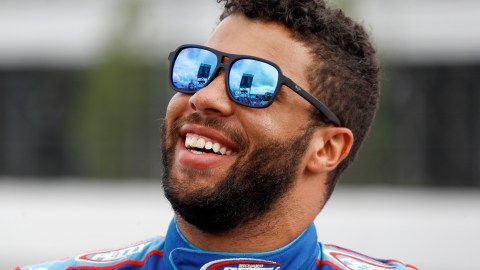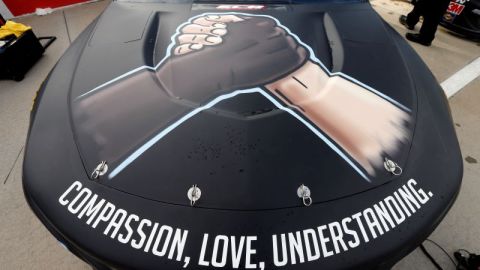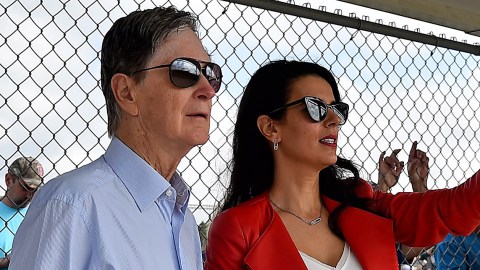 When is a foul not a foul?
When is a foul not a foul?
When a player or commentator is complaining about it, usually.
Criticism of officials steadily increases with each successive round of the NBA playoffs, and reaches a fever pitch in the NBA Finals. In a way, this is a good thing for the league, because this means more casual fans who aren’t familiar with the intricacies of the rules are watching and complaining. More viewership is always good, even if it’s angry, ill-informed viewership.
Ignorance becomes more of an issue when it is on the part of the players on the court or the commentators who are supposed to be educating the fans. Every time LeBron James clasps his head in disgust or Reggie Miller interprets a call, incorrectly, from the sideline after seeing an instant replay, another handful of fans gets a mistaken idea of some rule or another.
To clear up some confusion, we scoured the official NBA casebook for answers. Below are some of the most commonly misconstrued rules, with explanations behind why the typical interpretation is wrong.
After going out of bounds, a player has to touch both feet inbounds before he can legally touch the ball.
This might come as a shock, but the NBA and NFL are two different leagues, and legal inbounds position in basketball is entirely different from legally catching a football. That’s the only place this confusion can come from, because at no level of basketball does a player need to have both feet inbounds to be legally in play. The cliché to follow in determining whether a player is inbounds is “something in, nothing out.”
During Game 3, Spurs guard Danny Green was out of bounds underneath the basket while Heat players and his teammates were batting the ball around. As it floated in the air near the baseline, Green stepped inbounds with one foot and lifted his other foot off the court, then grabbed the ball. When the referees whistled Green for being out of bounds, play-by-play announcer Mike Breen said it was out-of-bounds because Green “never got that second foot down” inbounds.
That was not the case. Green’s “second foot” never had to be inbounds. This was just a missed called by the officials, who thought Green’s “second foot” was still touching out-of-bounds — i.e. that he did not have “nothing out.”
A travel occurs when a player lifts his pivot foot without dribbling.
Of course it doesn’t, if you think about it. If a travel occurred whenever a player lifted his pivot foot, no one would ever be able to attempt a jump shot, since leaving the ground for the shot would be a traveling violation every time.
Even with a dead dribble, a player can lift his pivot foot off the floor. The violation occurs when the pivot foot returns to the court without the player throwing a pass or attempting a shot. However, a player needs to have a legal pivot foot established when he begins his dribble — this is why a player can’t jump for a shot, change his mind in mid-air and start dribbling before he lands.
If the offensive team fails to get the ball across the halfcourt line when the 24-second shot clock reads “16,” an eight-second violation has occurred.
So wrong, as we have covered in its own full story.
A shooter fouled in the air, after the shot has been released, has been fouled “after the shot.”
The act of shooting cannot be interrupted at all, by a defender or the game clock. The act begins when the offensive player starts his upward shooting motion and ends when he returns to the court after the shot. This applies even if the ball is long gone in its path to the hoop, and “even if the horn sounds to end the period.” The shooter gets two shots (or three).
A defender has to allow the jump shooter a chance to land.
Nope. While this might seem contradictory to the previous rule, the shooter is within some limitation on his airborne options. If the shooter jumps sideways, forward, backward or in an out-of-control manner, the defender has no obligation to get out of his way if the defender has a legal guarding position or has jumped vertically in that space to contest a shot.
Sorry, Dwyane Wade.
A defender in the restricted area around the basket can never draw an offensive foul.
This is another one that is just common sense. If an offensive player knew he was immune to an offensive foul inside the restricted area (that little oval line painted around the basket), all bets would be off when he got the ball down there. He could barrel into defenders with reckless abandon. But if an offensive player begins his shooting motion inside the “lower defensive zone” below the block, that oval area is no longer “restricted.” Only if the offensive player begins his shot outside the zone, and attempts a shot directly at the basket, is he immune from a charge on a defensive player inside the oval.
Note that he is immune from a “charge,” to use the layman’s term, not all offensive fouls all together. That was Shane Battier‘s miscalculation when he raised his knee into Roy Hibbert, who was within the restricted area, on a layup attempt in the Eastern Conference Finals. Battier was correctly assessed an offensive foul.
A defender at the edge of the restricted oval may lift his heel off the line to get into a legal position outside the restricted area.
The restricted area is one of the few places on a basketball court where position has no bearing on where the player last touched the floor. Imagine an invisible wall extending upward from that oval. If a player is inside that wall, he is inside the restricted area, even if his foot is not touching the line.
Speaking of the position of a defender’s feet, now we come to the mother of all misunderstood rules …
A defender’s feet must be planted for him to draw an offensive foul.
This is probably the most commonly misapplied rule in the books (just recently, I was speaking with a Massachusetts high school and AAU referee who declared a defender must have his feet “set” to draw an offensive foul. Hopefully, he is not assigned to any big games in the near future). There is no requirement for a defender to have his feet planted, set, fixed, or whatever synonyms for “stationary” you can come up with, at the high school, college or professional levels.
A defender needs only to have an established, legal guarding position in a “spot” when he contacts an offensive player to draw a player-control foul. The defender is explicitly allowed to lean to either side, or move laterally or backward. It’s not even necessary for him to hold his arms down at his sides, although many often do, to accentuate the stationary-ness of their bodies.
From Item V. (28) in the NBA Case Book: The defender is allowed to “firm up,” move his feet and/or turn slightly to better absorb the contact. Or take Item V. (29): A dribbler is expected to be in control at all times and if a defender can legally get to a ‘spot’ in the path of the dribbler, it is the dribbler’s responsibility to stop and/or change direction immediately.
So where does the “feet must be planted” concept even come from? Most likely from coaches trying to drill into their players a fail-safe method to draw charges. It is easier for a coach to instruct his or her players to plant their feet than to give them the more nebulous order to “assume a legal defensive stance.” As a result, “plant your feet” joins “follow your shot” as faulty clichés we learned in youth ball.
Now you know. Next time you’re watching a game, drop some knowledge on the folks you’re watching the game with — and be prepared for all of them to tell you what a moron you are.
Have a question for Ben Watanabe? Send it to him via Twitter at @BenjeeBallgame or send it here.



